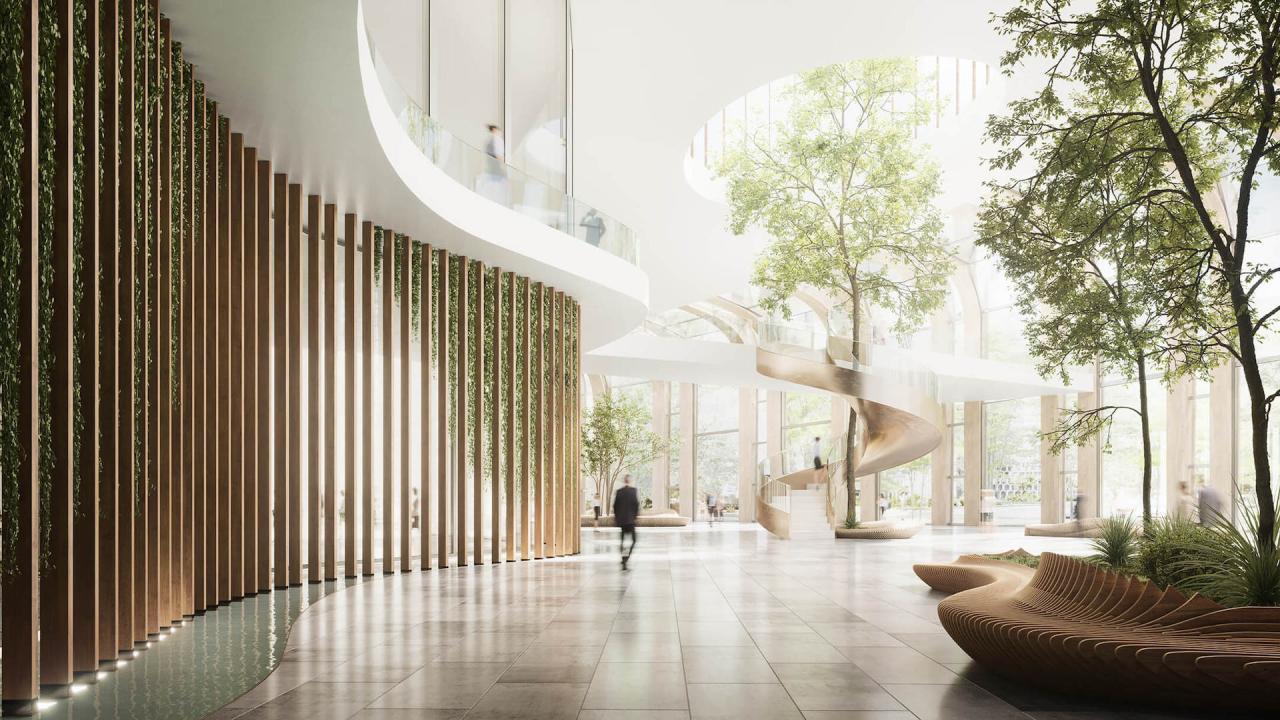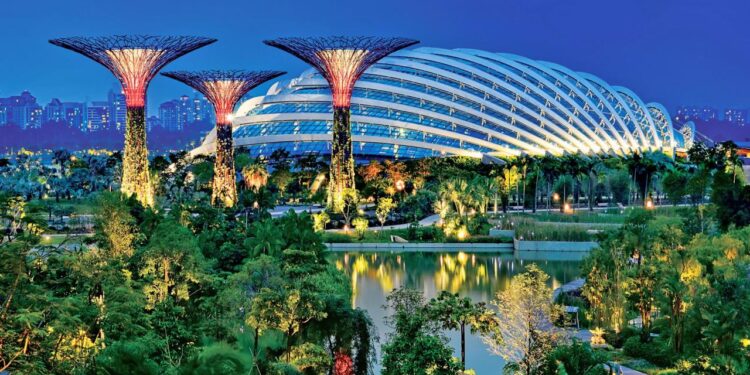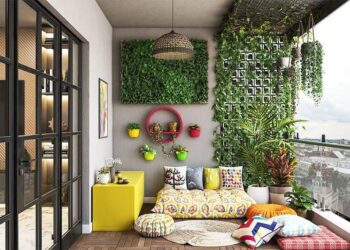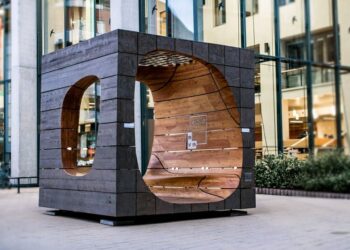In an era defined by environmental consciousness and resource scarcity, sustainable design innovation has transcended being merely a niche trend to become an imperative. It’s no longer just about aesthetics or functionality; it’s about creating products, spaces, and systems that minimize environmental impact, conserve resources, and foster social equity throughout their entire lifecycle. This comprehensive article delves into the core principles of sustainable design, explores its diverse applications across various industries, and examines the critical role innovation plays in shaping a more resilient and harmonious future for our planet. We’ll uncover how designers, engineers, and businesses are reimagining creation to prioritize the health of both people and the planet.
What is Sustainable Design?

Sustainable design is a multifaceted approach that goes far beyond simply “being green.” It encompasses a holistic philosophy that considers the environmental, social, and economic impacts of design decisions from conception to end-of-life.
A. Environmental Responsibility: This is the most recognized aspect, focusing on reducing carbon footprint, minimizing waste, conserving natural resources, preventing pollution, and protecting biodiversity. It involves thoughtful material selection, energy efficiency, and waste management.
B. Social Equity and Well-being: Sustainable design aims to improve the quality of life for all stakeholders, including producers, consumers, and communities. This involves fair labor practices, ergonomic design for user comfort, accessibility, and contributing positively to community health and cultural preservation.
C. Economic Viability: For sustainable design to be truly impactful and scalable, it must also be economically feasible. This means creating designs that are cost-effective to produce, durable, repairable, and offer long-term value, ultimately contributing to a circular economy.
D. Life Cycle Thinking: A fundamental principle is to consider the entire “cradle-to-grave” or ideally, “cradle-to-cradle” journey of a product or system. This includes raw material extraction, manufacturing, transportation, use, maintenance, and disposal or recycling. Designers analyze impact at each stage to identify areas for improvement.
E. Resilience and Adaptability: Sustainable designs are often robust, adaptable, and capable of withstanding environmental shifts or evolving societal needs, promoting longevity and reducing the need for constant replacement.
F. Biomimicry: Drawing inspiration from nature’s designs and processes, biomimicry is a powerful tool in sustainable design. It seeks solutions that are inherently efficient, non-toxic, and regenerative, mirroring natural ecosystems.
True sustainable design is an integrated approach that balances these interconnected pillars, striving for solutions that benefit people, profit, and the planet. It challenges conventional linear consumption models and advocates for a more circular and regenerative approach.
Key Principles of Sustainable Design
Innovation is at the heart of sustainable design, pushing boundaries and finding novel solutions to complex environmental challenges. Several core principles guide this innovation.
I. Material Revolution
The choice of materials is arguably the most critical decision in sustainable design, and it’s an area seeing tremendous innovation.
A. Renewable Resources: Prioritizing materials that can be naturally replenished at a rate comparable to their consumption, such as bamboo, cork, organic cotton, and responsibly sourced timber. Innovations here include engineered wood products that reduce waste.
B. Recycled and Upcycled Content: Utilizing post-consumer or post-industrial waste materials to create new products. This includes everything from recycled plastics and metals to upcycled textiles and reclaimed construction materials. Innovative processes are making it possible to recycle more complex materials.
C. Biodegradable and Compostable Materials: Developing materials that can safely return to the earth at the end of their life, such as bioplastics derived from plant starches or compostable packaging, reducing landfill burden.
D. Non-Toxic and Low-Impact Materials: Selecting materials free from harmful chemicals (e.g., VOCs, heavy metals) that can off-gas into the environment or harm human health during production or use. Innovations in “green chemistry” are crucial here.
E. Local Sourcing: Reducing transportation emissions by sourcing materials locally, which also supports local economies and allows for better oversight of production practices.
F. Modular and Disassemblable Materials: Designing products with materials that can be easily separated and recycled or repurposed at the end of their life, facilitating a circular economy. This also extends to innovative bonding methods that allow for easy disassembly.
Innovation in material science is continuously delivering new options, from mushroom-based packaging to self-healing concrete, all aimed at reducing environmental footprint.
II. Energy Efficiency
Designing for minimal energy consumption throughout a product’s or building’s lifecycle is a cornerstone of sustainable innovation.
A. Passive Design Strategies: In architecture, this involves optimizing building orientation, fenestration (window design), insulation, and natural ventilation to reduce the need for artificial heating and cooling. Innovations include smart facades that adapt to sunlight.
B. Renewable Energy Integration: Incorporating solar panels, wind turbines, geothermal systems, and other renewable energy sources into buildings and products to reduce reliance on fossil fuels. Innovations are making these technologies more efficient and aesthetically integrated.
C. Low-Energy Manufacturing Processes: Designing products that require less energy during their production phase, through optimized processes, localized manufacturing, and efficient machinery.
D. Energy-Efficient Components: Specifying components and appliances with high energy ratings, such as LED lighting, efficient motors, and smart home systems that optimize energy use.
E. Energy Harvesting: Developing products that can harvest ambient energy (e.g., kinetic, thermal, solar) to power themselves or other devices, reducing the need for external power sources. Think of self-powered sensors.
Innovations in smart grids, energy storage, and building management systems are continually enhancing the energy performance of sustainable designs.
III. Waste Reduction and Circularity
Moving away from the linear “take-make-dispose” model, sustainable design innovation embraces circularity.
A. Design for Durability and Longevity: Creating products that are built to last, with robust construction and timeless aesthetics, reducing the frequency of replacement.
B. Design for Repairability: Ensuring products can be easily repaired with readily available parts and simple tools, extending their lifespan and reducing waste. Innovations include modular designs where components can be swapped out.
C. Design for Disassembly and Recycling: Engineering products so that their components can be easily separated and recycled into new products, minimizing landfill waste. This requires careful consideration of material compatibility and fastening methods.
D. Upcycling and Repurposing: Finding creative ways to transform discarded materials or products into new items of higher value or different function, preventing them from becoming waste.
E. Product-as-a-Service Models: Shifting from selling products to providing services (e.g., leasing rather than selling washing machines), incentivizing manufacturers to design for durability, repair, and eventual recovery of materials.
F. Closed-Loop Systems: Designing systems where waste from one process becomes input for another, mimicking natural ecosystems and eliminating waste entirely. This is a highly ambitious but crucial area of innovation.
Innovation in waste management, recycling technologies, and business models are critical for achieving a truly circular economy.
IV. Water Conservation
Water is a finite and increasingly scarce resource, making its conservation a vital aspect of sustainable design.
A. Water-Efficient Fixtures and Appliances: Designing and specifying low-flow toilets, showerheads, faucets, and energy-efficient washing machines and dishwashers that significantly reduce water consumption.
B. Rainwater Harvesting: Integrating systems into buildings and landscapes to collect and store rainwater for non-potable uses like irrigation or toilet flushing, reducing reliance on municipal water supplies.
C. Greywater Recycling: Designing systems to treat and reuse “greywater” (water from sinks, showers, and laundry) for irrigation or toilet flushing, further reducing freshwater demand.
D. Landscape Design for Water Efficiency: Employing xeriscaping principles (drought-tolerant plants), permeable paving, and efficient irrigation systems to minimize water usage in outdoor spaces.
E. Industrial Water Management: Innovating processes in manufacturing to minimize water usage, recycle process water, and treat wastewater effectively before discharge.
Innovations in smart water metering, leak detection, and water purification technologies are enhancing water conservation efforts in design.
V. Social Equity and Health
Sustainable design isn’t just about the environment; it’s about people.
A. Universal Design and Accessibility: Creating products and environments that are usable by people of all ages and abilities, regardless of physical or cognitive limitations. This improves social inclusion and equity.
B. Ergonomic Design: Focusing on user comfort, safety, and efficiency to reduce strain and injury, enhancing overall well-being.
C. Indoor Air Quality: Designing buildings with good ventilation, using low-VOC materials, and incorporating natural air purifiers to ensure healthy indoor environments.
D. Community Engagement: Involving local communities in the design process, ensuring designs meet their needs, respect their culture, and contribute positively to their social fabric.
E. Fair Labor Practices: Considering the social impact of the supply chain, ensuring ethical sourcing and fair treatment of workers involved in manufacturing processes.
F. Education and Awareness: Designing products and systems that also educate users about sustainable practices, empowering them to make more environmentally conscious choices.
Sustainable innovation increasingly prioritizes human well-being and social justice as integral components of true sustainability.
Sustainable Design Across Industries

The principles of sustainable design are being applied and innovated across a vast spectrum of industries.
I. Architecture and Construction
This sector is at the forefront of sustainable design, with an emphasis on green buildings and sustainable urban planning.
A. Net-Zero Buildings: Designing buildings that produce as much energy as they consume over a year, often through a combination of passive design, renewable energy generation, and extreme efficiency.
B. Modular and Prefabricated Construction: Reducing on-site waste, improving quality control, and speeding up construction by pre-assembling building components off-site.
C. Adaptive Reuse: Repurposing existing buildings for new functions rather than demolishing them, which saves materials, energy, and preserves cultural heritage.
D. Biophilic Design: Integrating natural elements and systems into building design to connect occupants with nature, improving health and well-being. This includes green roofs, living walls, and natural light.
E. Smart Building Technologies: Using sensors and AI to optimize energy use, ventilation, and lighting based on occupancy and environmental conditions, leading to dynamic energy savings.
Innovations like “living buildings” that mimic ecosystems and self-sustaining urban farms are pushing the boundaries of what’s possible in sustainable architecture.
II. Product Design
From electronics to furniture, product designers are integrating sustainability at every stage.
A. Circular Electronics: Designing smartphones and gadgets that are easy to repair, disassemble, and recycle, with manufacturers taking responsibility for end-of-life management.
B. Sustainable Packaging: Developing innovative packaging solutions that are biodegradable, compostable, made from recycled content, or designed for reuse. Think of edible packaging or dissolvable pods.
C. Eco-Friendly Apparel: Creating clothing from organic, recycled, or innovative biodegradable textiles, with processes that minimize water and chemical use. The “slow fashion” movement is gaining traction.
D. Longevity and Repair: Designing appliances and consumer goods with robust components and accessible repair manuals, empowering consumers to extend product lifespans.
E. Additive Manufacturing (3D Printing): Reducing material waste by building products layer by layer, only using the material needed, and enabling localized production.
Innovation here ranges from ocean plastic recycling into consumer goods to entirely new bio-based materials that replace traditional plastics.
III. Fashion and Textiles
The fashion industry, historically a significant polluter, is seeing major shifts towards sustainability.
A. Sustainable Sourcing: Using organic cotton, recycled polyester, Tencel, hemp, and other environmentally friendly fibers. Innovation in material science is introducing new fibers from unexpected sources like algae or mushroom mycelium.
B. Low-Impact Dyeing Processes: Developing new dyeing techniques that use less water, fewer chemicals, or natural dyes, significantly reducing pollution.
C. On-Demand and Local Production: Reducing waste from overproduction and minimizing transportation emissions by producing garments only when ordered and often closer to the consumer.
D. Textile Recycling Innovation: Developing advanced technologies to break down mixed-fiber textiles and recreate new high-quality yarns, closing the loop on textile waste.
E. Rental and Resale Models: Promoting business models that encourage the sharing, renting, and resale of clothing, extending the life of garments and reducing consumption.
The focus is shifting from seasonal trends to timeless, durable, and ethically produced pieces.
IV. Graphic Design and Digital Media
Even in seemingly intangible fields like graphic design, sustainability is making an impact.
A. Energy-Efficient Web Design: Designing websites with streamlined code, optimized images, and dark modes (for OLED screens) to reduce the energy consumption associated with data transfer and display.
B. Sustainable Printing Practices: Recommending recycled paper, vegetable-based inks, and local printers for print projects to minimize environmental impact.
C. Longevity of Digital Assets: Designing timeless and adaptable visual identities that don’t require frequent overhauls, reducing repeated design effort and associated energy consumption.
D. Responsible Data Storage: Considering the energy consumption of data centers and advocating for cloud services powered by renewable energy.
E. User Engagement for Sustainability: Using graphic design to communicate sustainable messages effectively, influencing consumer behavior towards greener choices.
While less overt, the innovations here focus on the “invisible” environmental footprint of digital creation and consumption.
The Role of Technology and Future Outlook
Technology is a critical enabler of sustainable design innovation, and its future implications are vast.
A. Artificial Intelligence (AI) and Machine Learning: AI can optimize designs for material efficiency, predict environmental impacts, analyze supply chains for sustainability, and even generate new sustainable material compositions. It can rapidly assess thousands of design permutations.
B. Blockchain Technology: Providing transparency and traceability in supply chains, allowing consumers to verify the ethical and sustainable origins of products.
C. Internet of Things (IoT): Smart devices and sensors in buildings and products can monitor resource consumption (energy, water) in real-time, providing data for optimization and behavioral change.
D. Advanced Manufacturing (e.g., 3D Printing): Enables on-demand production, reduces waste, allows for complex geometries that use less material, and facilitates localized manufacturing, cutting down on transportation emissions.
E. New Material Science: Continuous breakthroughs in bio-based polymers, self-healing materials, carbon capture materials, and advanced recycling technologies are transforming what’s possible.
Conclusion
The future of sustainable design will likely see an even deeper integration of these technologies, leading to increasingly intelligent, regenerative, and seamlessly sustainable solutions. We’ll move towards a world where sustainability isn’t an add-on but an intrinsic quality of all design, driven by both necessity and innovation. The challenge lies in scaling these innovations and ensuring equitable access to their benefits worldwide.






Discussion about this post